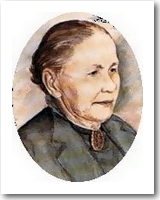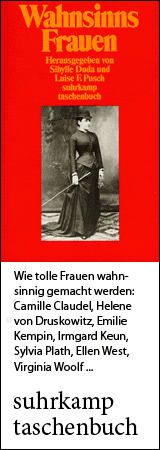
(Apollonia Margarete Steiff)
born on July 24, 1847, in Giengen an der Brenz, Kingdom of Württemberg
died on May 9, 1909, in Giengen an der Brenz, Kingdom of Württemberg
German craftswoman, founder of a global company
Biography
At 18 months, Margarete developed a high fever which left her with both legs paralyzed and impaired, painful mobility in her right arm. At first, it seemed as if the child would have to remain sadly dependent on others for her entire life. But Margarete's zest for life, self-confidence, and courage made it possible for her to believe in her own potential. She persistently demanded to be allowed to attend school – and succeeded. She was taken there every day in a small cart pulled by her sisters and other children in the neighborhood. It was not until years later that she was to receive a wheelchair.
After graduating from school, she completed an apprenticeship as a seamstress and was then able to work in her sisters' dressmaking business. She bought the first sewing machine in Giengen, and since she had difficulty operating the flywheel with her right hand, she turned the machine around and operated it with her left hand.
As Margarete was unable to start a family of her own, she concentrated on the growing number of orders the women's dressmaking business was receiving and hired assistants. At the age of 30, she opened her own shop, where she made coats and underwear from felt. The pattern for a felt pincushion in the shape of a small elephant, which she had found in a fashion magazine, was the initial spark for the further development of her business. At first, she gave a few of these little elephants as gifts to her nieces and nephews, who loved playing with them. When more and more other families wanted an elephant, Margarete ramped up production to meet the increasing demand and, assisted by her brother Fritz, also sold them at the Heidenheim Christmas market. Margarete then expanded her animal repertoire to include horses, donkeys, pigs, and camels. The production of toys became her second mainstay in the business, and the premises soon became too small. Fritz built Margarete a residential and commercial building with a wheelchair ramp to the upper floor. She hired homeworkers, and in 1893 her business was entered in the German Commercial Register as Margarete Steiff, Filzspielwarenfabrik Giengen/Brenz GmbH.
Ten years later a bear designed by her nephew Richard became a milestone for the company. Margarete was doubtful that children would find the shaggy, clumsy animal attractive. But when an American came across the cuddly toy at the toy fair in Leipzig, he enthusiastically bought up the entire collection – and Americans, including President Theodore (“Teddy”) Roosevelt were delighted; her “Teddy bear” became a bestseller. Margarete lived to see the small factory develop into a global company before she died unexpectedly of pneumonia in 1909.
(Text from 2008; translated with DeepL.com; edited by Ramona Fararo, 2025.
Please consult the German version for additional information, pictures, sources, videos, and bibliography.)
Author: Mechthild Winkler-Jordan
Quotes
Only the best is good enough for children. (Margarete Steiff)
If you hold the rights to one or more of the images on this page and object to its/their appearance here, please contact Fembio.



